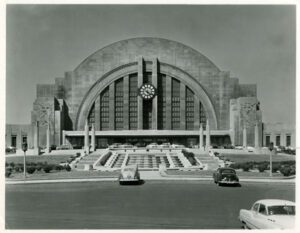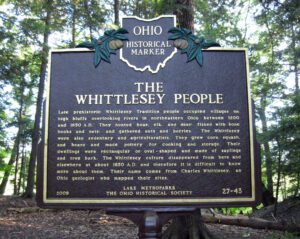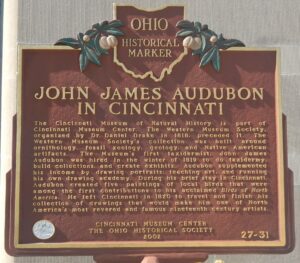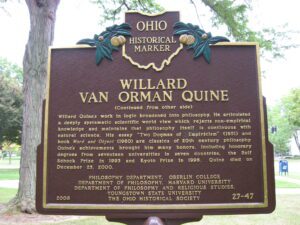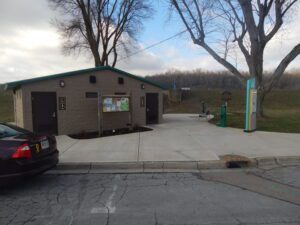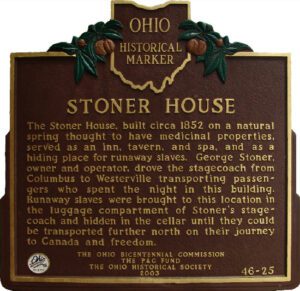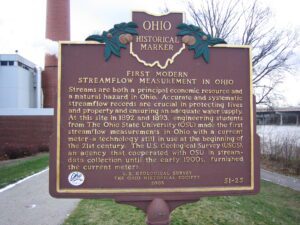, OH
The Cincinnati Union Terminal opened in March 1933 and integrated rail travel in the city, which previously operated from five separate passenger terminals. Built when rail travel was already in decline, Union Terminal stopped operating as a passenger railroad station in 1972. Only during WWII was the terminal used to capacity with as many as 34,000 people travelling through the building daily in 1944. As part of preservation efforts, 14 mosaics depicting Cincinnati industry of the 1930s by Winold Reiss were saved from the concourse and moved to the Greater Cincinnati Airport. The restored Union Terminal became a Museum Center in November 1990 with the opening of the renovated Cincinnati Museum of Natural History and new Cincinnati History Museum. Cincinnati Union Terminal has been described as one of the most outstanding examples of Art Deco train stations in the nation and was listed on National Register of Historic Places in 1972.
, OH
The Indian Point Site contains the remains of a prehistoric Native American earthen enclosure, officially known as the Lyman site, named after a former property owner. The site contains two earthen walls that are bordered by ditches. Steep cliffs provide natural barriers on two sides of the enclosure. Archaeological digs have uncovered many artifacts here, including pottery sherds, tools, pipes, and beads. There is evidence that the walls were built around 140 B.C., and the site was occupied again around 1500 A.D. by the Whittlesey Tradition people. It is uncertain if the site was a village or was used as a ceremonial center. After 1650 A.D., the area became a neutral hunting ground for various historic tribes.
, OH
The Cincinnati Museum of Natural History is part of Cincinnati Museum Center. The Western Museum Society, organized by Dr. Daniel Drake in 1818, preceded it. The Western Museum Society’s collection was built around ornithology, fossil zoology, geology, and Native American artifacts. The Museum’s first taxidermist, John James Audubon was hired in the winter of 1819 to do taxidermy, build collections, and create exhibits. Audubon supplemented his income by drawing portraits, teaching art, and running his own drawing academy. During his brief stay in Cincinnati, Audubon created five paintings of local birds that were among the first contributions to his acclaimed Birds of North America. He left Cincinnati in 1820 to travel and finish his collection of drawings that would make him one of North America’s most revered and famous nineteenth century artists.
, OH
Willard Van Orman Quine was one of the greatest philosophers and logicians of the 20th century. Born in Akron on June 25, 1908, Quine studied philosophy and logic at Oberlin College (B.A. 1930). He received his Ph.D. in philosophy from Harvard University in 1932 and spent his entire career on the Harvard faculty, from 1956 to 1978 as Edgar Pierce Professor of Philosophy. Quine’s early research in logic led to his New Foundations system of set theory and to the Quine-McCluskey algorithm, used in computer science. His textbook Methods of Logic established the standards for undergraduate logic instruction. (Continued on other side)
, OH
In late March 1913, a series of three severe rainstorms inundated the already saturated and frozen ground of the Miami Valley, causing one of Ohio’s greatest natural disasters, the Flood of 1913. On March 25, the Great Miami River overflowed its banks at Miamisburg, fed by runoff from Bear and Sycamore creeks. Homes, businesses, and the bridges at Linden Avenue and Sycamore Street were swept away or wrecked by floodwaters reaching as high as eleven feet on Main and First streets. Early reports indicated that six people in the area died. Cleanup and recovery efforts took approximately a year. (Continued on other side)
, OH
The Stoner House, built circa 1852 on a natural spring thought to have medicinal properties, served as an inn, tavern, and spa, and as a hiding place for runaway slaves. George Stoner, owner and operator, drove the stagecoach from Columbus to Westerville transporting passengers who spent the night in this building. Runaway slaves were brought to this location in the luggage compartment of Stoner’s stagecoach and hidden in the cellar until they could be transported further north on their journey to Canada and freedom.
, OH
In 1937, Anne O’Hare McCormick became the first woman to win the Pulitzer Prize for foreign correspondence. She was born in Yorkshire, England and moved to Ohio as a child. She was educated at the Academy of St. Mary of the Springs. As a freelance writer, McCormick contributed to the Atlantic Monthly, the New York Times, and others. She became a regular correspondent for the Times in 1922 and was the first woman to join its editorial board in 1936. As a Times correspondent in Europe during the tumultuous years before and during World War II, she conducted interviews with leaders including Benito Mussolini, Adolf Hitler, Neville Chamberlain, Winston Churchill, and Josef Stalin.
, OH
Streams are both a principal economic resource and a natural hazard in Ohio. Accurate and systematic streamflow records are crucial in protecting lives and property and ensuring an adequate water supply. At this site in 1892 and 1893, engineering students from The Ohio State University (OSU) made the first streamflow measurements in Ohio with a current meter – a technology still in use at the beginning of the 21st century. The U.S. Geological Survey (USGS), an agency that cooperated with OSU in stream-data collection until the early 1900s, furnished the current meters.


